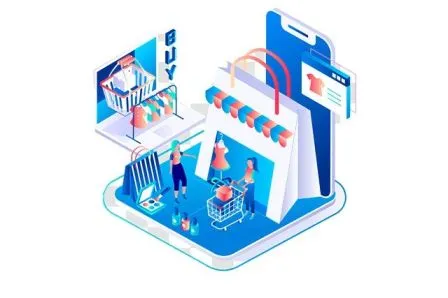To achieve higher sales and greater market share, businesses usually invest heavily in discounts and marketing promotions. With discount offers and cashback programs, you can aim to build a strong brand in terms of more revenue, higher customer loyalty, and ultimately a bigger market share. However, running discount promotions continuously can harm the brand value and profitability of the business.
The choice between a cashback or discount strategy depends on various factors and the specific goals of your business. Both strategies have their advantages and can be effective in different situations.
Discount offers and Sales
Advantages of Discounts
-
Immediate Savings
Discounts provide an instant reduction in the purchase price, which can attract price-sensitive customers and drive sales in the short term.
-
Bulk purchases
Discounts can encourage customers to buy more quantity or higher-value items to maximize savings.
-
Clear Value
Customers can easily understand and calculate the savings they will receive with a discount, making it a straightforward and transparent incentive.
-
Urgency and Impulse Buying
Time-limited discounts or limited stock offers can create a sense of urgency, prompting customers to make a purchase immediately rather than waiting.
-
Competitive advantage
Lower prices through discounts can attract price-conscious customers and potentially give your business an edge over competitors.
-
Brand Perception
Discounts can sometimes be associated with lower-quality products or a perception of desperate sales tactics. However, this can vary depending on how the discount is positioned and implemented.
Disadvantages of Discounts
Not every customer applies a coupon code or is price-conscious. Today, the buying decision of online shoppers is based on several factors such as brand affinity and psychological, cultural, and social aspects. People aren’t always price-conscious when it comes to purchasing goods and services that they really want for themselves or their loved ones.
Reducing prices during the sales period can affect additional revenue from such customers. For example, giving a bigger discount coupon is better for people hunting deals on Black Friday or Cyber Monday than reducing the overall price of your products.
Discount Strategy without Hurting Profit Margins
Ecommerce retailers often face conflict during main shopping days when they reduce the price to offer the product on sale and provide discount codes. Reducing price as well as offering deep discounts erodes the margins and profitability.
In this case, the business can consider creating a sales category on their website and list the products for the short duration (black Friday or cyber Monday) with changed product name and title, for example, ‘Reclining chairs at 30% Off [Cyber Monday Furniture Deal]. The original products can be in their main category with original prices where customers can use discount coupons. This strategy would also enable you to see the effectiveness of various deals such as discount codes, slashed prices, cashback, and free shipping offer through A/B testing.
While discounts may bring in more sales in the short term, they are generally not a good long-term strategy to promote a brand or product. When a business offers a traditional deep discount, they devalue their product and brand. Contrary to many businesses’ beliefs, promotions don’t always have to be direct discounts. Cashback offers are fast replacing direct discounts as a promotional strategy.
***Pro Tip- Rule of 100 as Discount Strategy
Use the rule of 100 for your discount offers. According to the rule of 100, when the price is under $100, a percentage discount is more powerful (10% saving on $10 spent). For over $100, putting the savings as a dollar is often more attractive ($20 saving on $100 spent).***
Cash back Offers
Cashback refers to the option where the spender is promised a percentage of cash or virtual cash for spending made. Customers can redeem their cashback amount on their next purchase. Cashback incentives can encourage repeat purchases as customers aim to accumulate more cashback rewards.
Cashback offers increase sales without devaluing or hurting the brand. Cashback strategy allows customers to choose how they want to spend the cashback amount, which can increase customer satisfaction. Reward program foster loyalty among existing customers by providing them with a tangible reward for their continued patronage. It can encourage repeat purchases and help build long-term customer relationships.
Why Cashback Offers are better than Discounts?
Overly use of deep discount promotions makes customers become conditioned to buy only during the ‘sales’ period. This is the basic example of the theory of conditioning. Over time, customers get conditioned and reinforced to buy in bulk and store up to have enough supply until the next sale period.
Moreover, they become more focused on price and less on product differentiators. They are forced to perform mental trade-offs based primarily on cost/benefit rather than an emotional attachment to the brand. They are also more likely to switch brands to get a lower price. Over time, the deep discounts lower profit margins significantly, hurting the brand and market share in a big way.
On the other hand, Cashback offers are an effective way to increase repeat purchases. Cashback promotions reward ‘loyal’ customers and not those looking to save money. The more money customers spend buying from the business, the greater their reward. So, business is not ‘begging’ customers to buy from it, but just rewarding them for supporting their brand.
***Pro Tip- Use Steadily Decreasing Discounts (SDD Strategy)
The SDD strategy refers to ending discounts by steadily decreasing them. This strategy signals customers of higher future prices. It encourages customers to make a purchase immediately.
For example, for sale spanning over three days,
offer 30% Off on Day 1,
20% Off on Day 2, and
10% Off on Day 3, instead of Offering 20% Off on all three days.
Strategically display the decreasing discounts on your website banners to execute the SDD strategy successfully.
With increasing competition and decreasing attention span of online shoppers, SDD strategy helps increase conversions by inducing regret in customers for missing out on a good deal.***
The choice between cashback and discount strategies will depend on your business objectives, target audience, product pricing, profit margins, and marketing goals. It may also be beneficial to test both approaches and gather data on customer response and overall sales impact to determine which strategy works best for your specific business. Additionally, it can be beneficial to analyze the cost implications, impact on profit margins, and the overall effectiveness of each strategy in achieving your business goals.

Hunaid Germanwala is a digital marketer and content creator at Health Products For You since 2014. He has an MS from Ulm University in Germany. His mind is always buzzing with creative ideas and is eager to explore new perspectives. His motto in life is “Better to Light the Candle than to Curse the Darkness.”














Leave a Reply